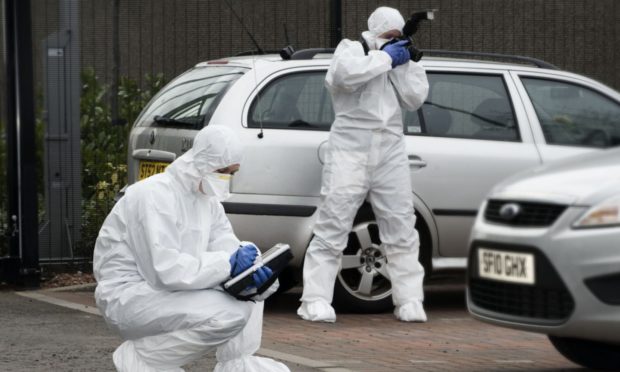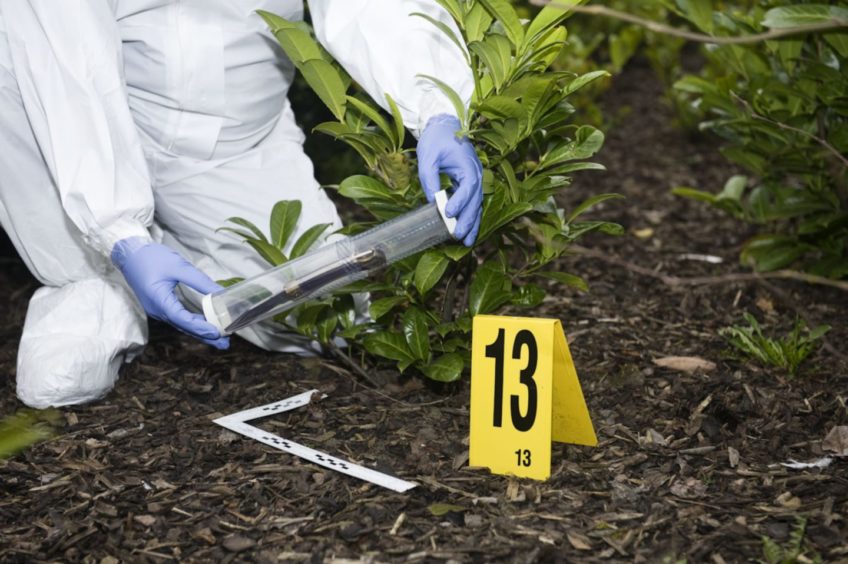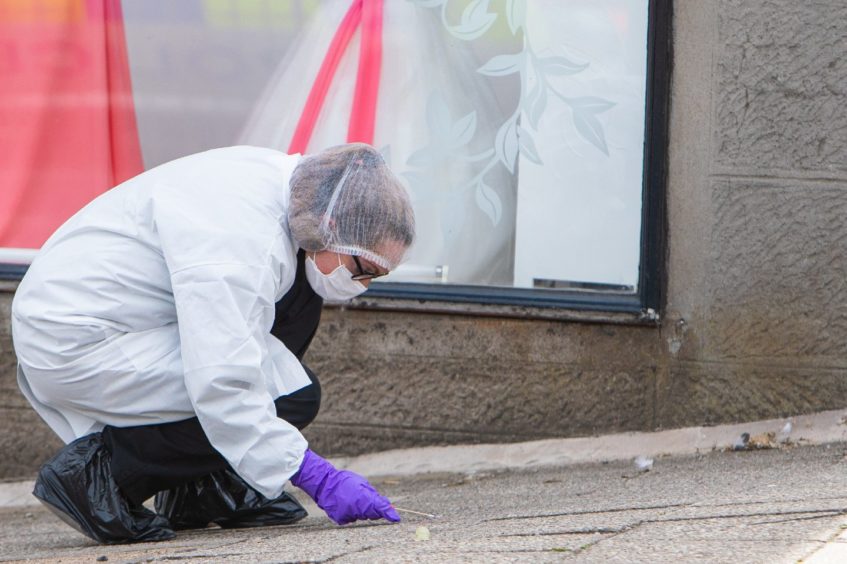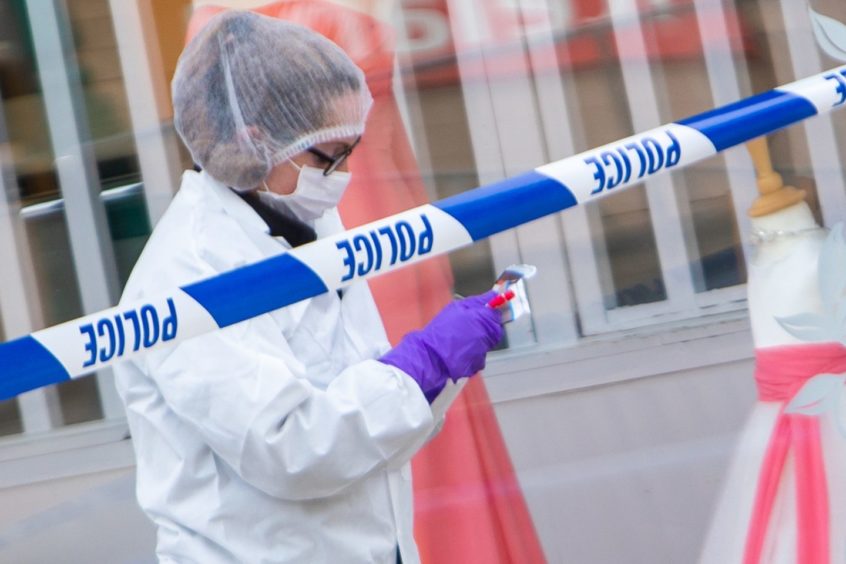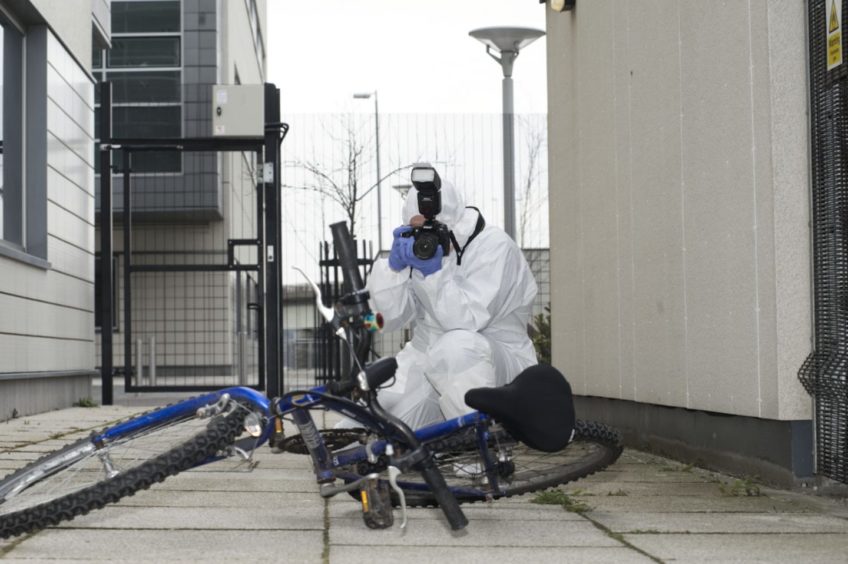The threat of Covid-19 presents hazards to all key workers – but arguably none are more aware of the dangers of cross contamination than those whose job it is to detect it.
Scottish Police Authority (SPA) forensic teams in Dundee and across the country spend their working days hunting for cross contamination in many forms, including fingerprints and DNA in blood or body fluid.
Their work responding to unexplained deaths, crimes of violence or dishonesty and other incidents including fires and crashes means forensic teams often have to enter hazardous scenes.
Scene examiners assess the risks to themselves before attendance in anticipation of toxic gasses, chemicals or airborne particles, biological hazards, confined spaces, presence of sharps, violence, aggression and many more.
However now Covid-19 is also considered crucial hazard – placing yet another pressure on an already stressful job.
Ivan Cunningham, operations manager for Forensic Services SPA in Dundee, said: “Our teams have worked hard over the various stages of lockdown to deliver our service and we have adapted existing safety procedures to keep working safely and meet all of the demands placed upon us.
“Like all key workers, our scene examiners face the reality of this invisible risk and the need to stay focused on safety is an extremely demanding element of the job.
“We work in scenes containing blood and body fluids routinely and have finely tuned our processes using safe systems of work and PPE to deal with this effectively.”
Due to the high volume of hazardous material at incident scenes, examiners were already equipped with full PPE including gloves, bodysuits and tight fitting FFP3 masks for use where the highest levels of respiratory protection are required.
These masks are now being worn more frequently due to the pandemic and triggers for use of different levels of use of PPE have been altered, including wearing double gloves when dealing with evidence.
Scene examiners are also required to assess their ability to stay physically distanced from the public and colleagues during the course of their examination at a crime scene.
Car sharing within teams is no longer allowed and general hygiene has been enhanced.
Ivan said: “As you would expect the levels of hygiene practices were already high but have now been further increased with regular touch point cleaning.
“Those who work in forensic science fully understand the principles of cross contamination and this is what our scene examiners are looking for when they attempt to find evidence that may identify the culprits at a crime scene.
“The offenders leaving behind material such as DNA or fingerprint ridge detail evidence.
“Using the same knowledge of how relatively easily every contact leaves a trace, scene examiners also adopt stringent counter contamination methods to ensure that they do not transfer evidential material by accident and this involves double gloving of hands and frequent glove changes as well as other PPE.”
Ivan says that this “deep understanding” of cross contamination heightens examiners’ awareness of how easily a virus can transfer without adequate infection control measures.
He said: “This provides an advantage in approaching the hazards of Covid-19 infection with the right assessment of the risk but also leaves many in our teams with a sense of wondering if that day they did enough to combat this potentially deadly threat.
“This really focuses the mind, particularly if you live with someone with a health condition that could become gravely ill if they were infected.
“Of course this is not unique to scene examiners and many people who perform key roles currently have to consider this reality every time they go home after their shift.”
Peer support always has been crucial to those working in scene examiner role and reduced numbers in the workplace have made it harder for staff to connect with each other.
Ivan said: “The natural debrief and sharing of experiences at the end of a demanding day that can play an important part of managing exposure to the consequences of tragedy, violence and trauma that scene examiners are exposed to routinely.
“Our supervisors play an important role in touching base on these topics and the use of video conferencing can assist with discussion but many feel this does not fully replace the value of sharing the same physical space to support each.
“There is a little more time spent in business meetings to take time to talk about non-work matters and discuss other parts of our lives to compensate for this.”
Despite the many challenges, the pandemic has not resulted in delays to forensic services, even at the beginning as forensics teams had plenty access to PPE supplies, which had been stocked in advance in anticipation of any shortfall due to Brexit.
Ivan said: “I am extremely proud of our relatively small team of forensic services scene examiners in Dundee and across the country who have not wavered in the levels of support to Police Scotland with their investigations as well as the victims of crime that we serve.”
